Free printable Sound Wall reading resources for kids! Teach the science of reading with phonemic awareness through reading patterns using our PDF sound wall cards. Download and print sound wall cards for your classroom bulletin board. Grounded in Science of Reading principles, this comprehensive set features short and long vowel sounds, beginning blends, ending blends, digraphs, r-controlled vowels, and more. These colorful early reading tools are great for daily decoding as well as sound-spelling activities for kindergarten and first-grade students. Each set includes a helpful visual for mouth positions to assist with articulation, and to provide an interactive alternative to traditional word walls.
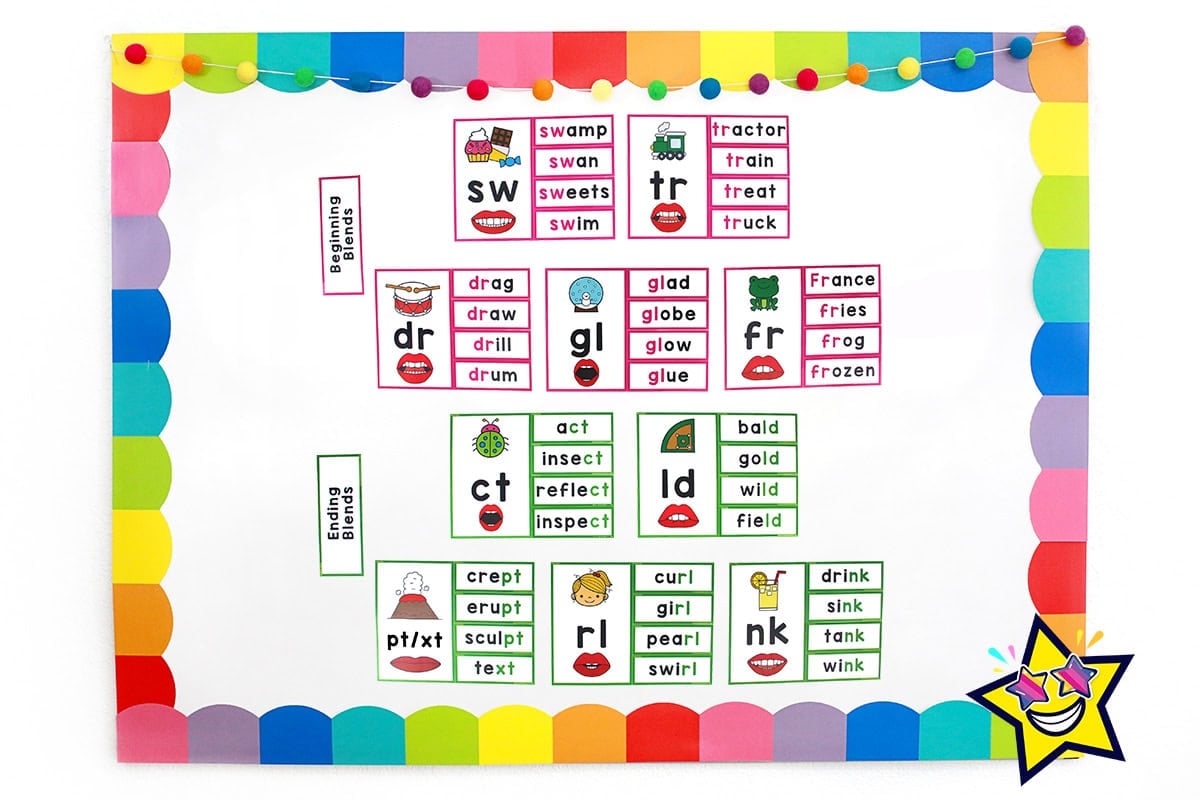
Short Vowel Sound Wall Printables
Short vowels (a, e, i, o, u) are listed on these free, printable sheets. Perfect posters or classroom decor for teachers and homeschool families.
- A – apple, bat, ham, cab
- E – egg, web, jet, pen
- I – bib, fin, sit, wig
- O – dog, top, box, mom
- U – duck, gum, pup, cut
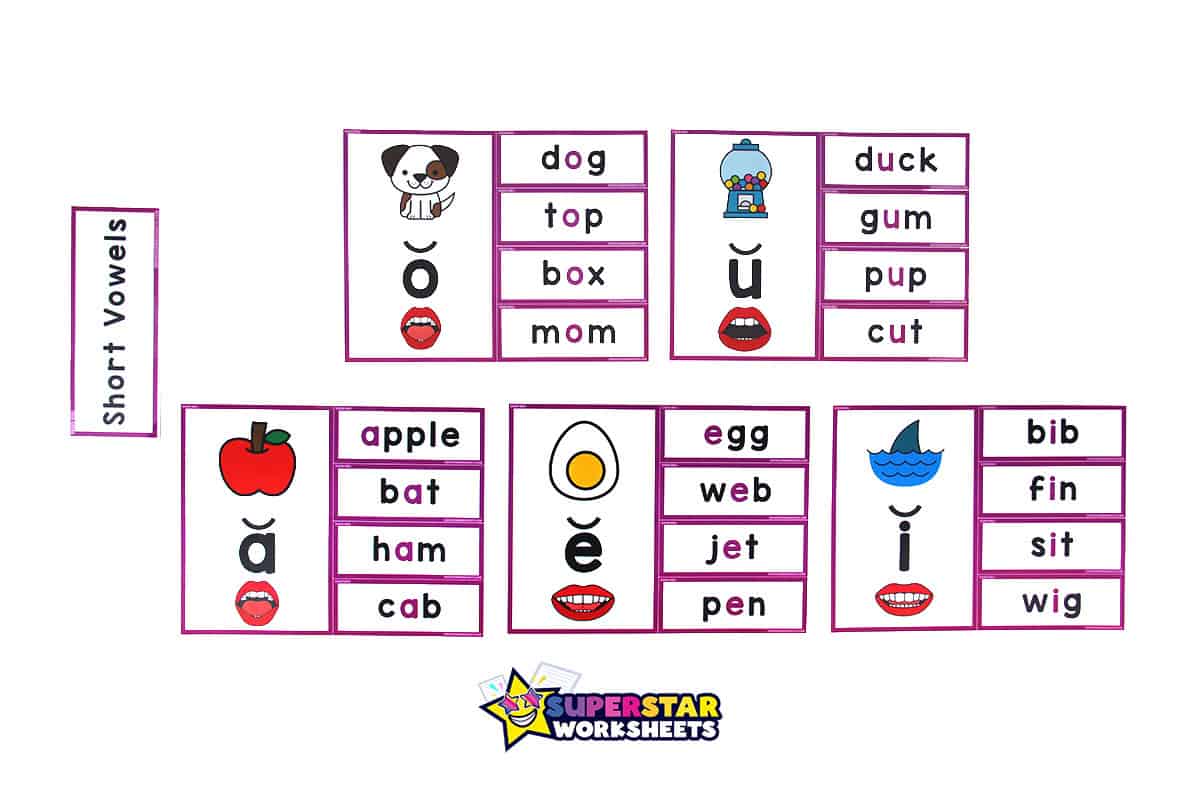
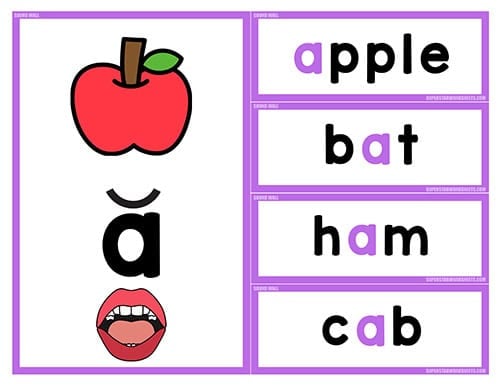
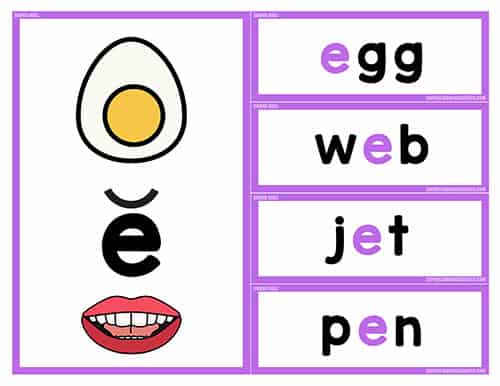
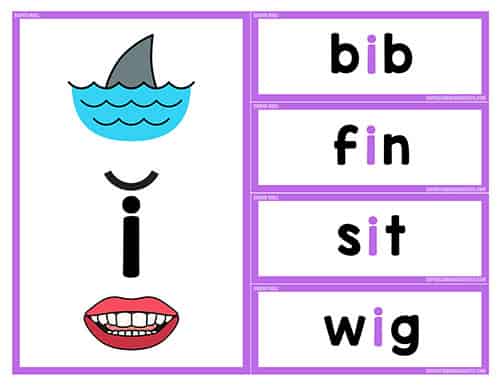
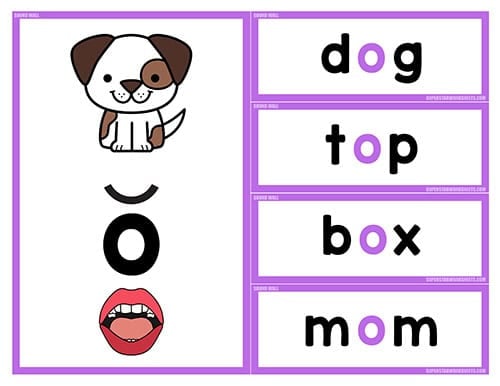
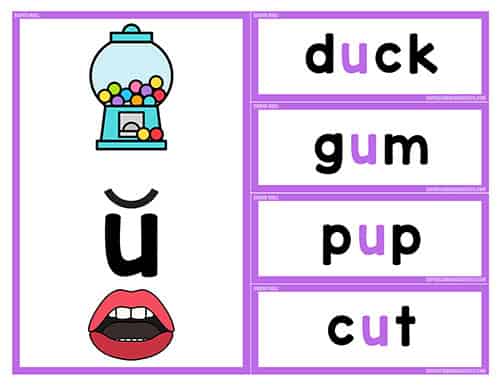
Long Vowel Sound Wall Printables
Free, printable long vowels (a, e, i, o, u) words are included on these beautifully created pages. Perfect for posters, word work, phonics practice, and so much more!
- A – hay, paint, face, steak
- E – cherry, eat, me, sleep
- I – rice, pie, cry, bright
- O – robe, float, toe, cone
- U – June, blue, news, fruit
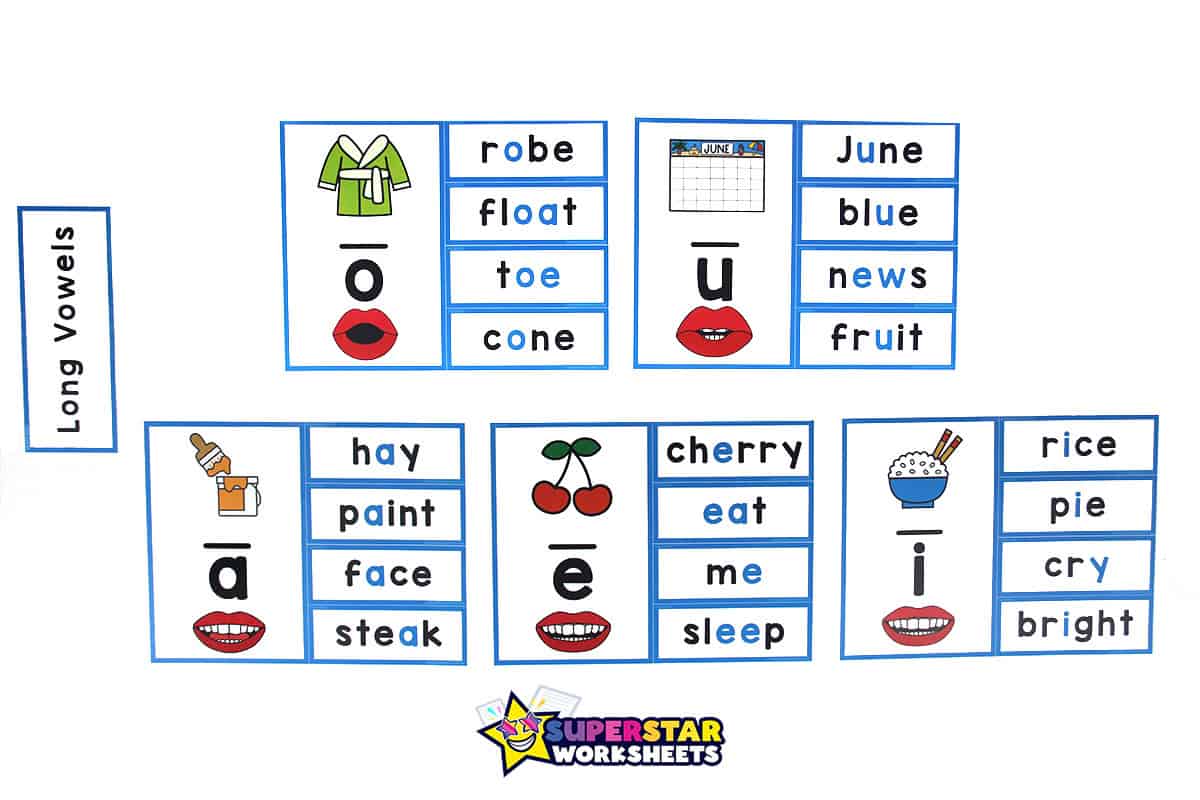
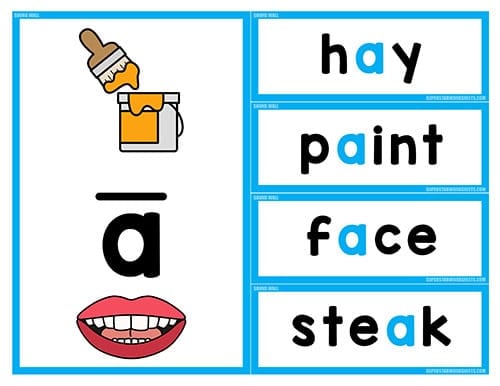
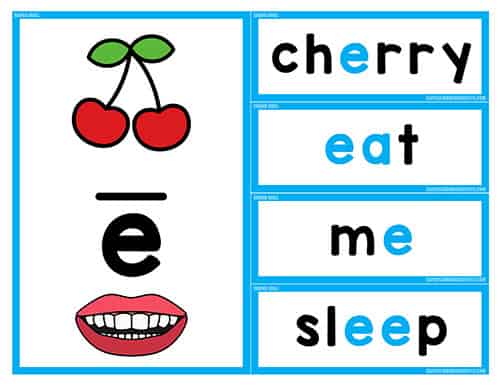
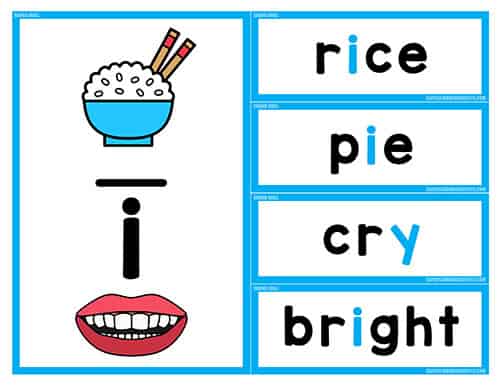
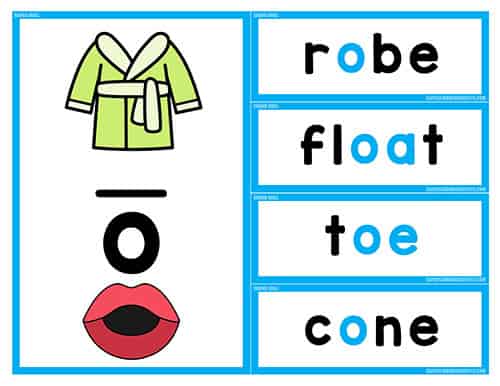
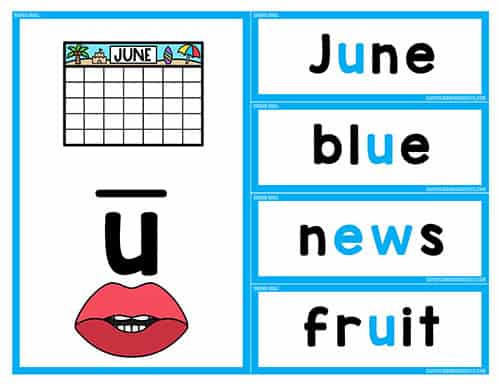
Sound Wall R-Controlled Vowels
R-controlled vowels use a vowel (a, e, i, o, u) along with the letter r to create a new type of sound. There are five printable r-controlled vowel cards with four words each in this set.
- AR – card, farm, jar, harp
- ER – germs, herb, fern, gerbil
- IR – bird, circus, twirl, third
- OR – coral, cork, stork, torch
- UR – burnt, fur, turtle, Saturn
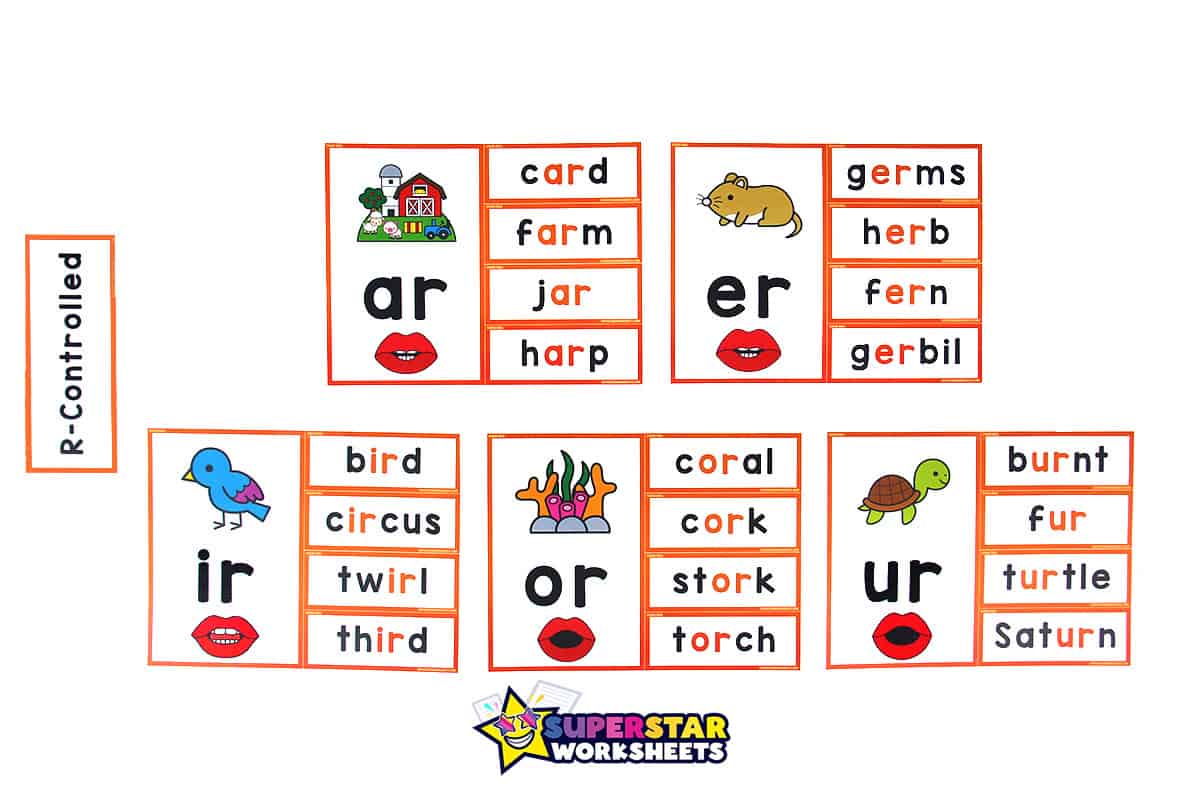
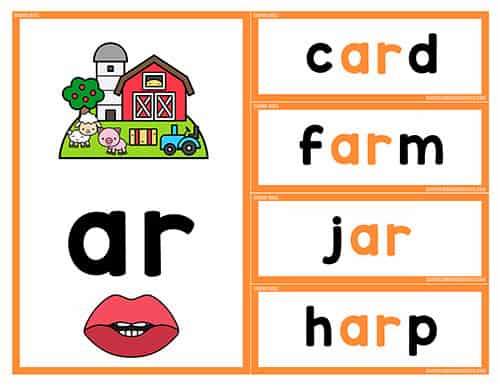
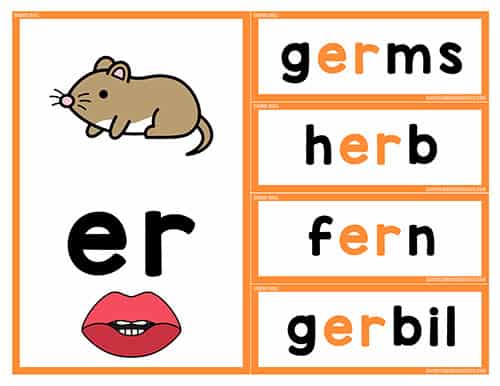
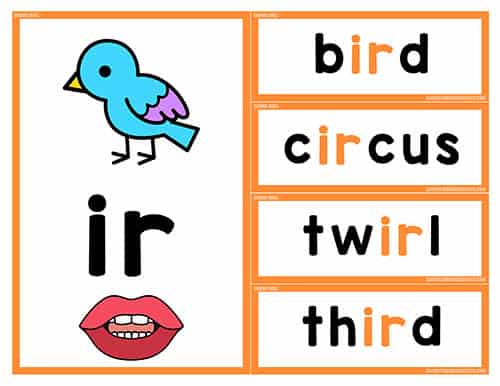
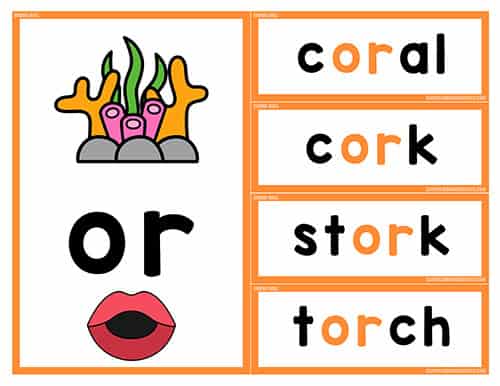
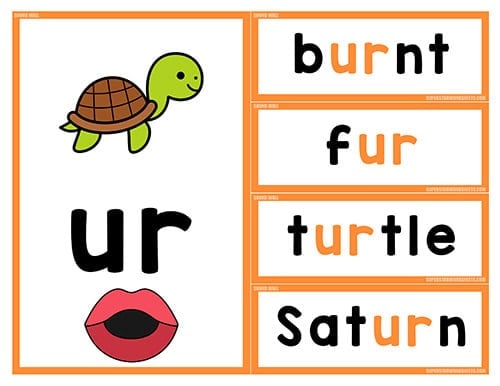
Sound Wall Digraphs
Practice digraphs with these fun printable poster pages. These free worksheets contain four words per digraph, along with a picture of a word that uses the digraph and the mouth structure for each digraph.
- CH – chess, chair, chip chicken
- CK – kick, sick, sock, duck
- KN – knight, knob, knife, knot
- NG – bang, king, sing, strong
- PH – phone, dolphin, photo, graph
- QU – quack, quote, queen, quiz
- SH – shovel, shapes, trash, fish
- TH – Earth, bath, thorn, thief
- WH – whale, whistle, who, wheat
- WR – wreath, wreck, wrench, wrist
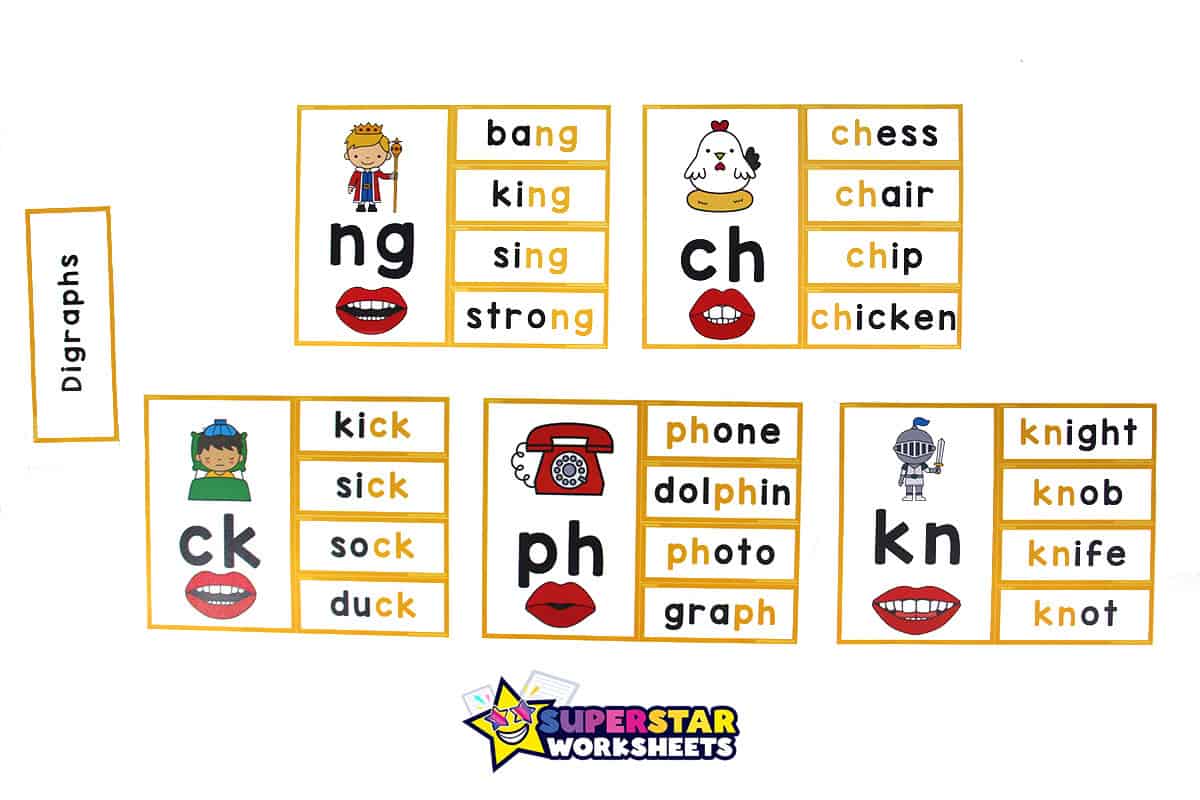
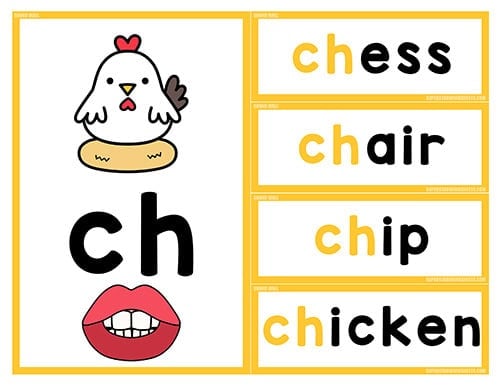
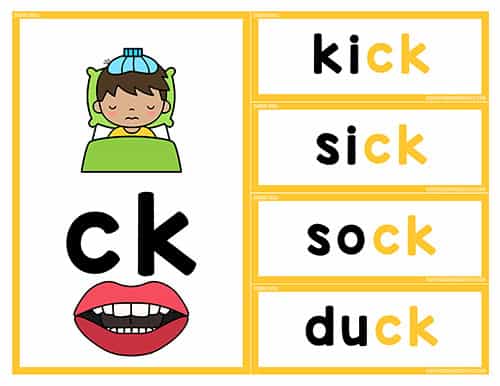
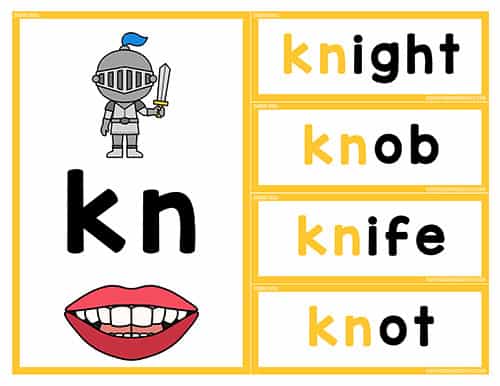
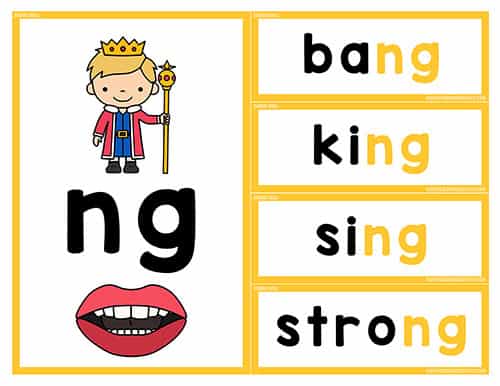
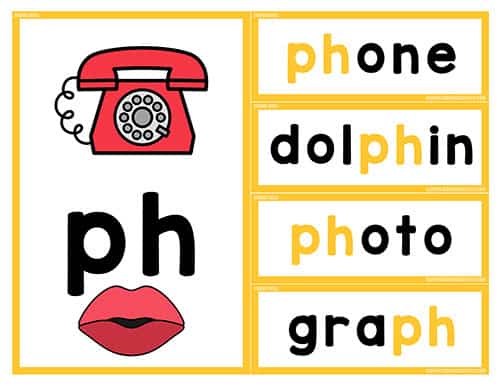
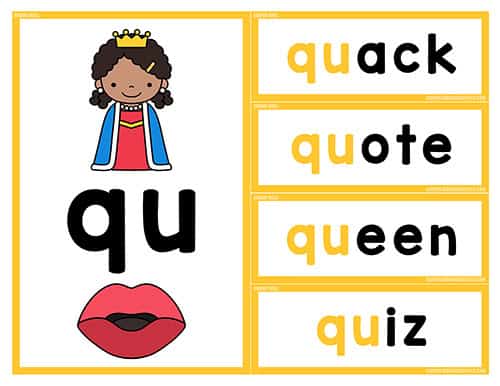
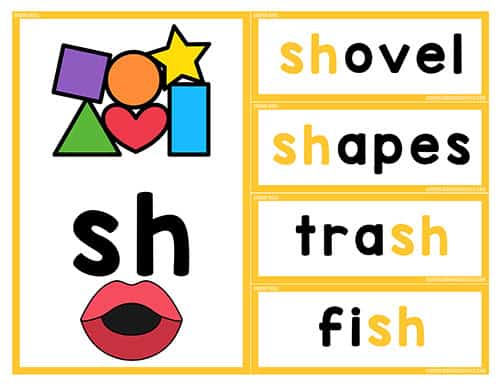
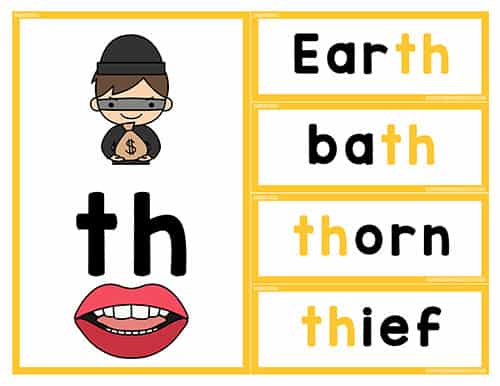
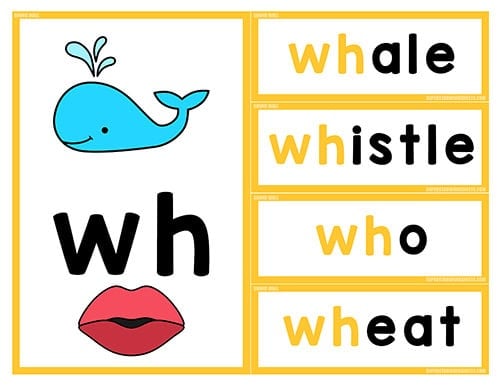
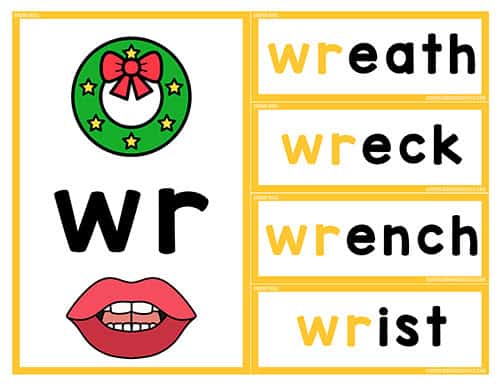
Sound Wall Beginning Blends
This beginning blends set contains bl, br, cl, cr, dr, dw, fl, fr, gl, gr, pl, pr, sc, sk, sl, sm, sn, st, sw, sp, tr and tw. Each printable page features the blend, mouth showing the sound, and a picture of a word with the blend
- BL – black, blimp, blue, blush
- BR – brain, bread, bricks, brush
- CL – cliff, clock, club, clap
- CR – crane, crash, cross, cry
- DR – drag, draw, drill, drum
- DW – dwarf, dwindle
- FL – flag, flea, flake, flower
- FR – France, fries, frog, frozen
- GL – glad, globe, glow, glue
- GR – grade, grapes, grass, green
- PL – plane, play, plug, plus
- PR – pray, pretzel, prize, prince
- SC – scarf, scan, scale, school
- SK – skin, skirt, skunk, sky
- SL – sled, slide, slime, slug
- SM – smart, smile, s’more, smudge
- SN – snacks, snail, snore, snow
- ST – stable, stamp, storm, stop
- SW – swamp, swan, sweets, swim
- TR – tractor, train, treat, truck
- TW – tweet, twigs, twist, twins
- SP – space, spell, spin, spoon
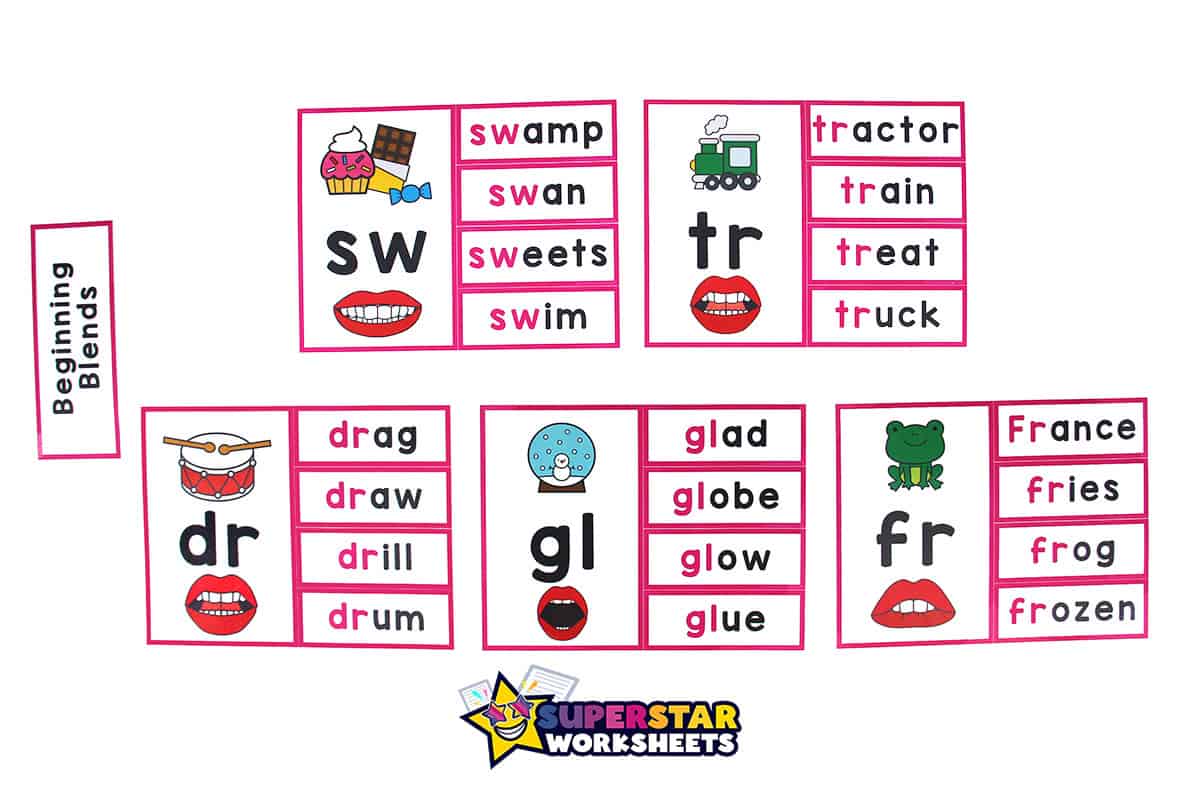
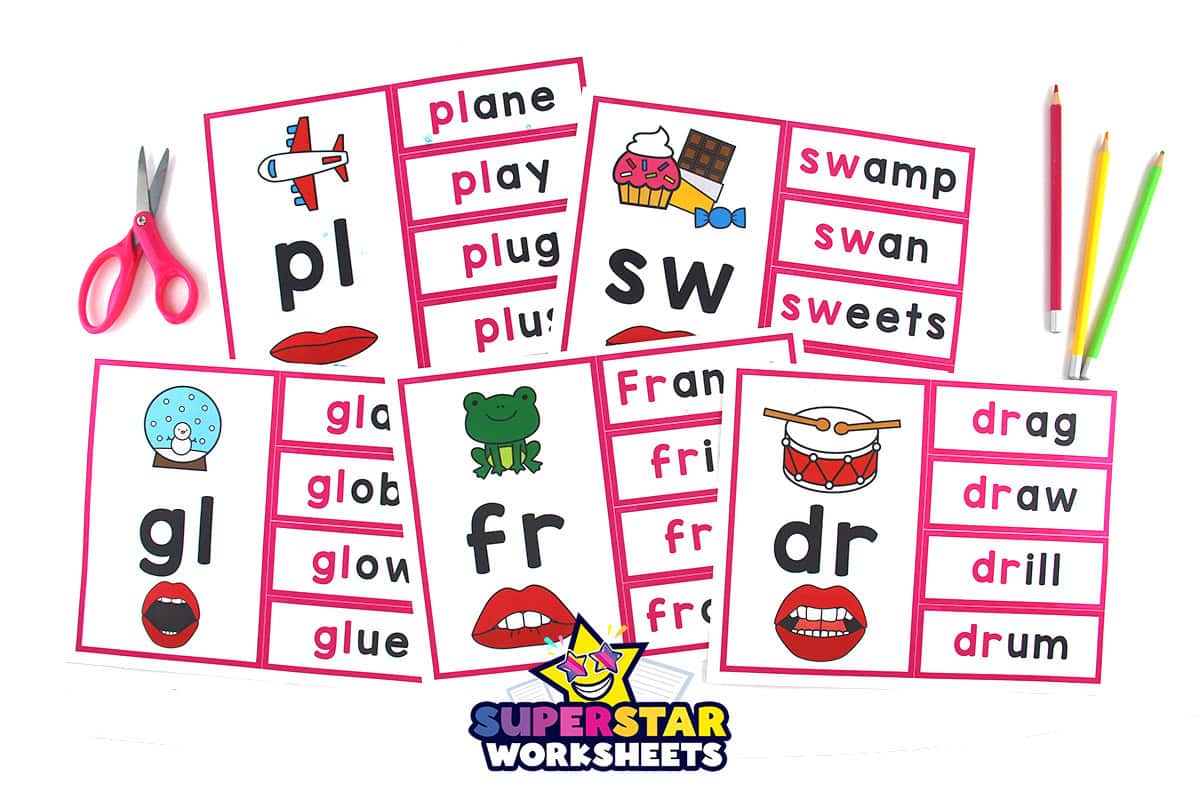
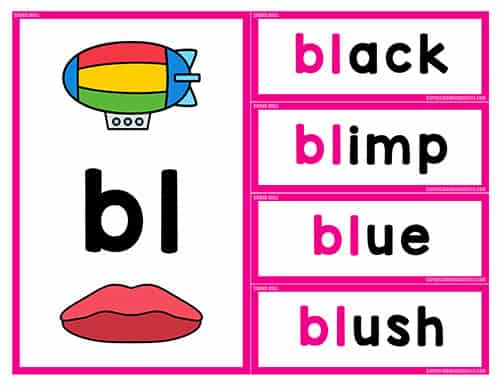
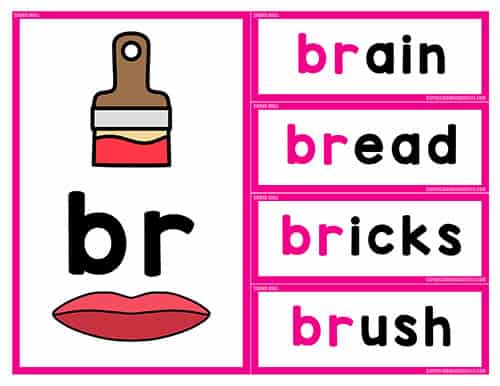
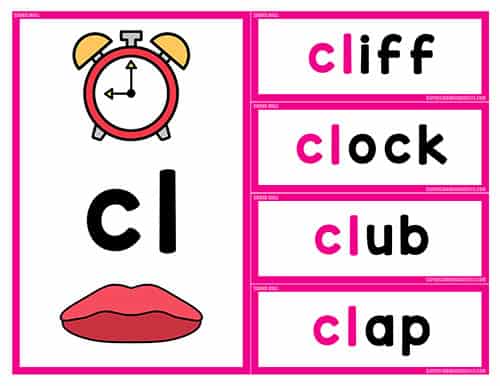
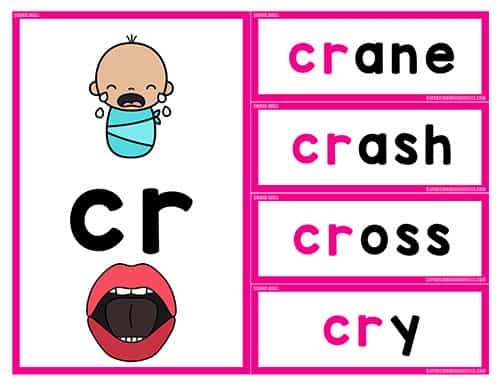
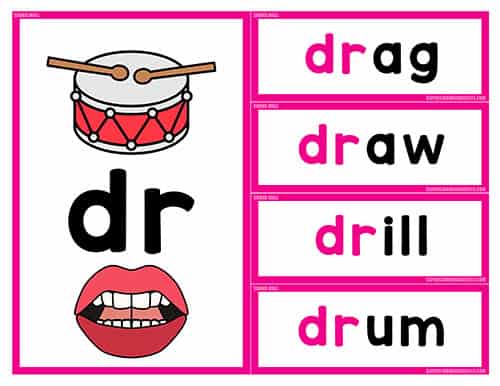
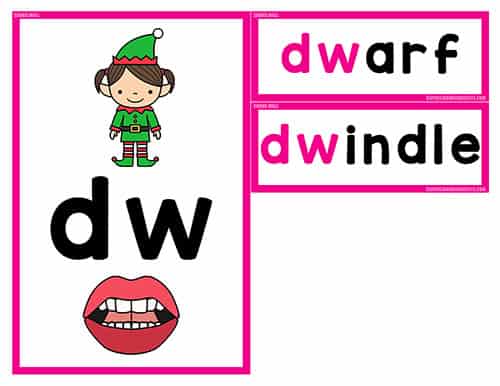
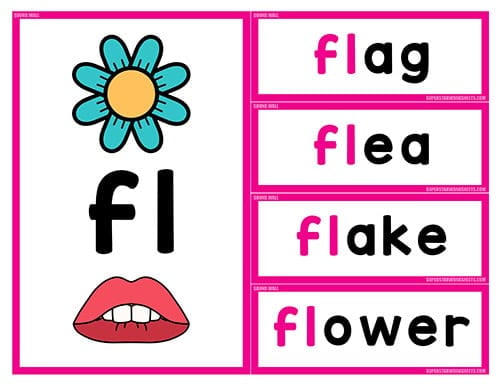
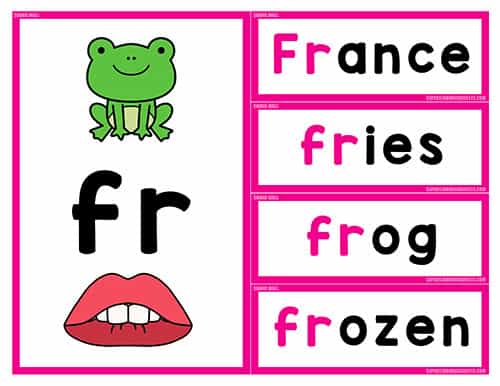
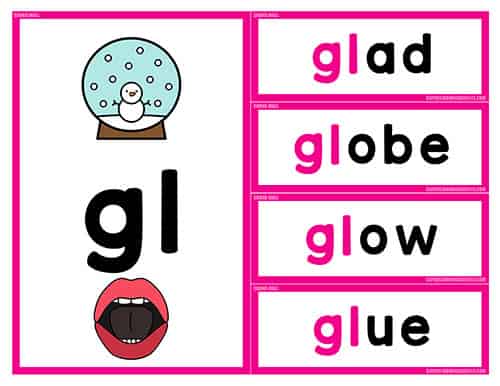
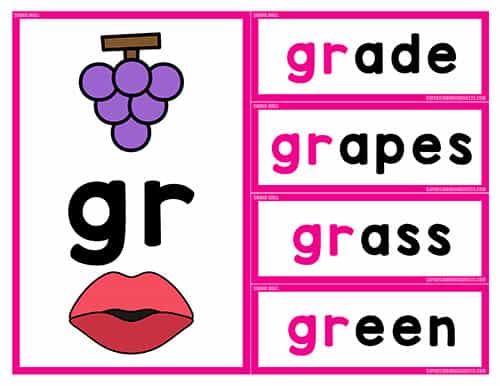
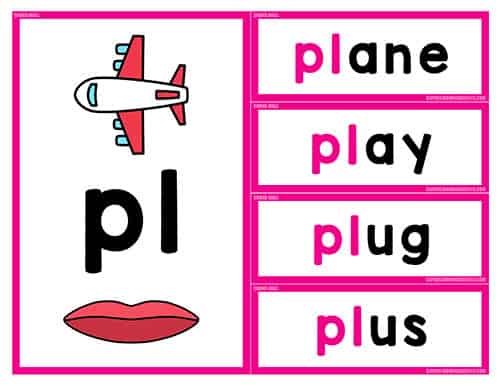
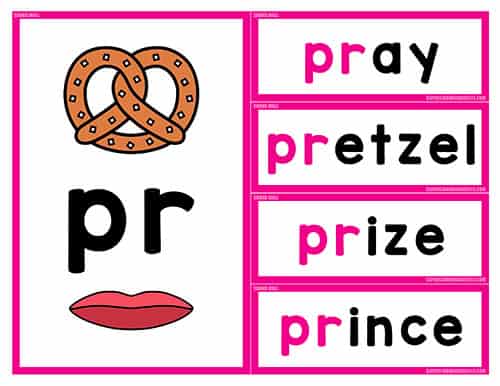
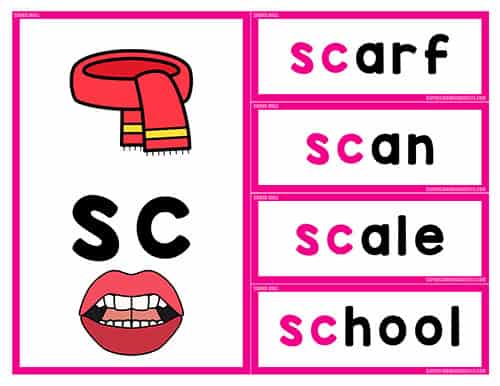
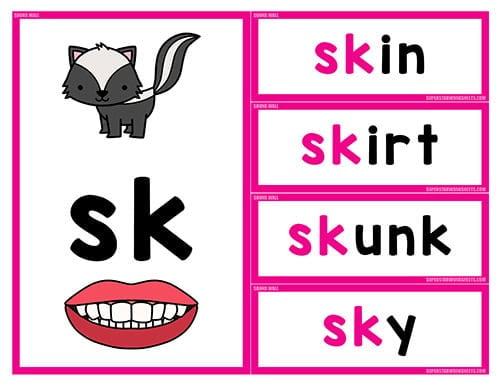
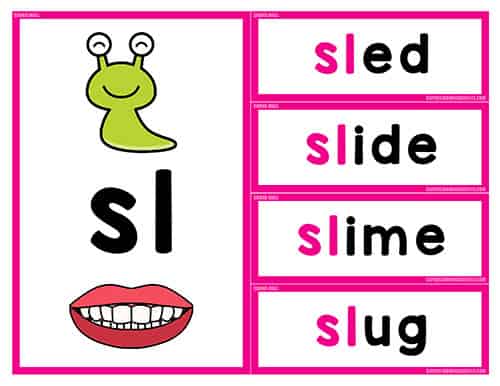
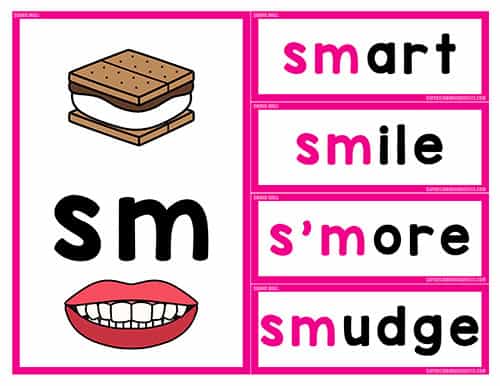
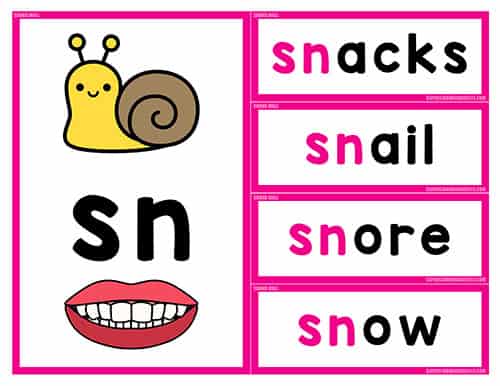
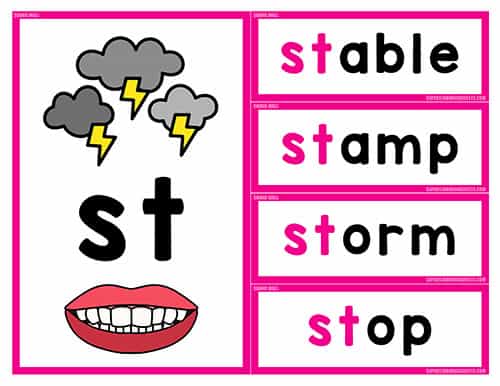
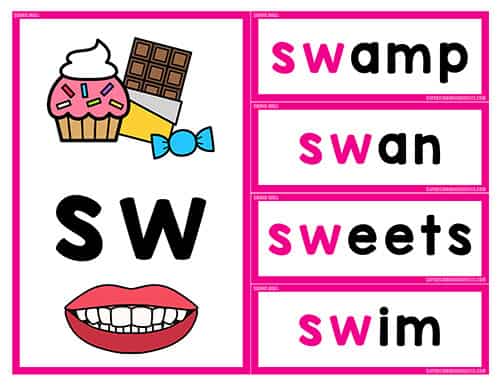
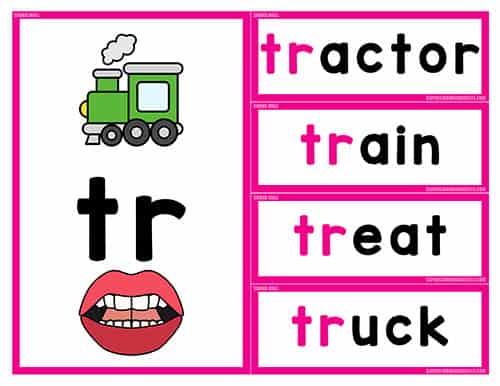
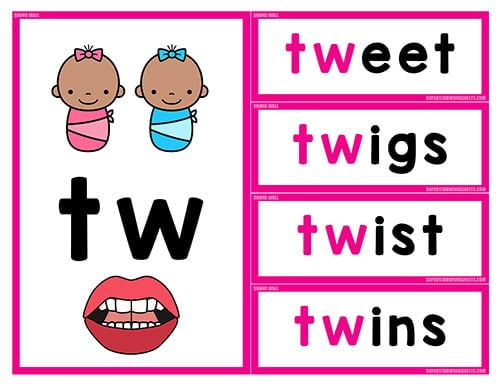
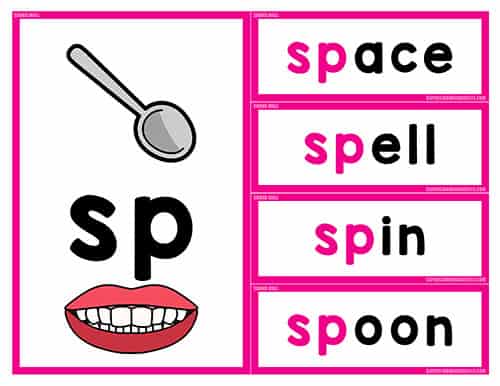
Sound Wall Ending Blends
Ending blends are fun and easy to teach with these beautiful posters. This free printable ending blend set features 25 pages of enjoyable ending blend poster pages.
- CT – act, insect, reflect, inspect
- FT – craft, gift, left, soft
- LB/LM – bulb, film, helm, palm
- LD – bald, gold, wild, field
- LF – elf, half, wolf, shelf
- LK – chalk, milk, talk, yolk
- LP – gulp, help, kelp, scalp
- LT – bolt, melt, quilt, adult
- MB/MP – numb, thumb, camp, stump
- ND – blind, hand, pond, send
- NG – sing, wing, long, fang
- NK – drink, sinnk, tank, wink
- NT – cent, mint, paint, hunt
- PT/XT – crept, erupt, sculpt text
- RD – bird, card, nerd, sword
- RF – dwarf, scarf, surf, turf
- RK – ark, fork, shark, stork
- RL – curl, girl, pearl, swirl
- RM – alarm, farm, germ, storm
- RN – barn, fern, horn, turn
- RP – burp, harp, tarp, sharp
- RT – art, dirt, heart, shirt
- SK – desk, mask, tusk, whisk
- SP – crisp, gasp, wasp, wisp
- ST – cast, dust, list, pest
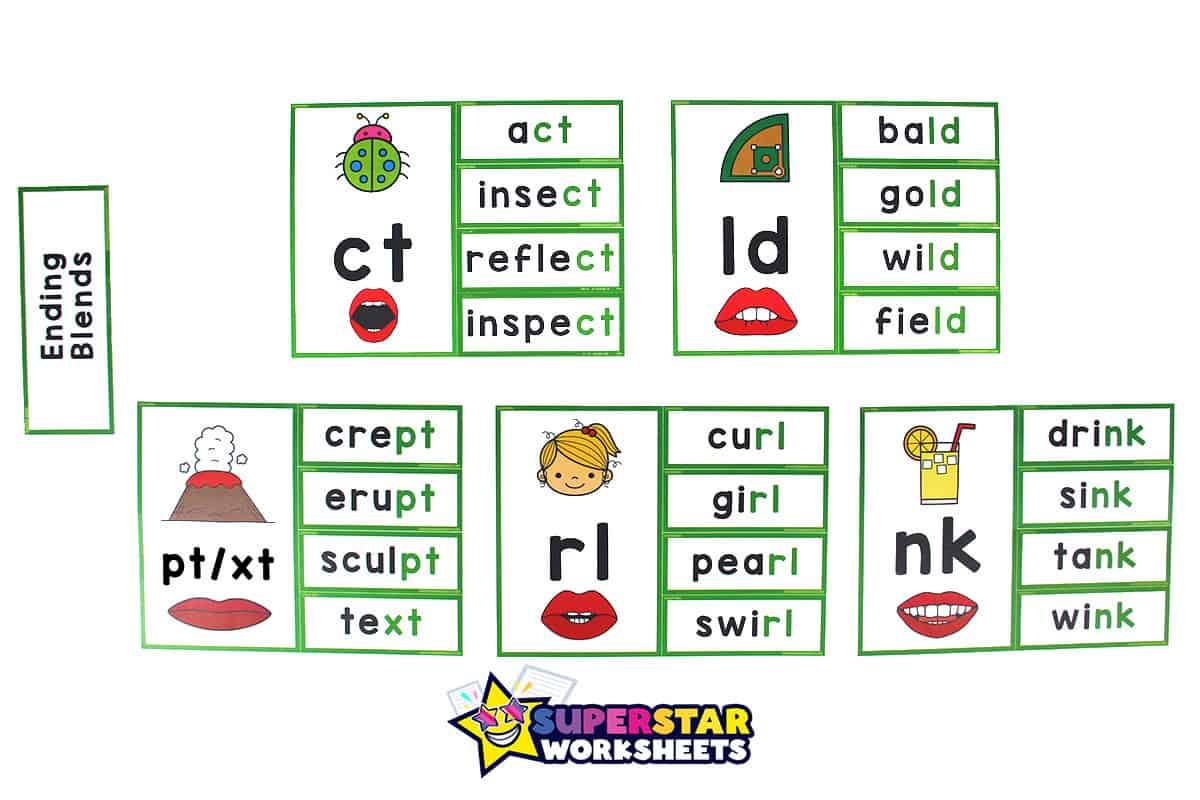
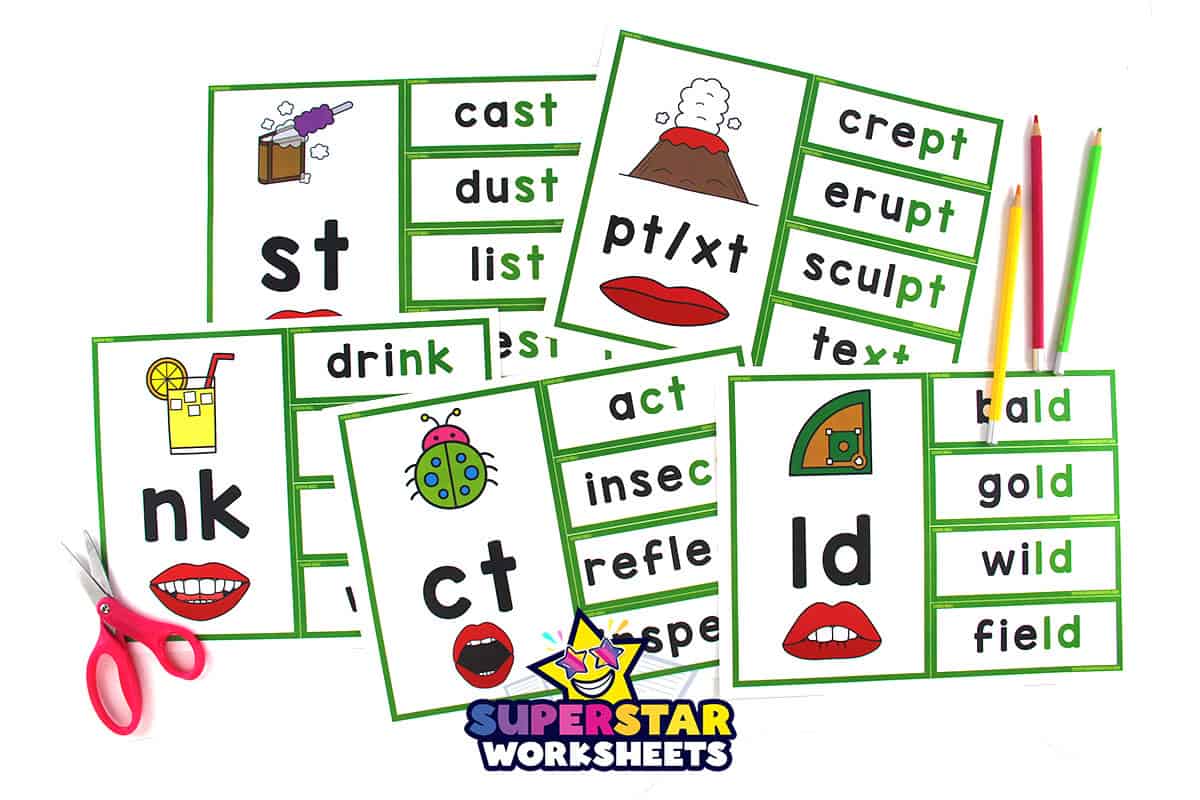
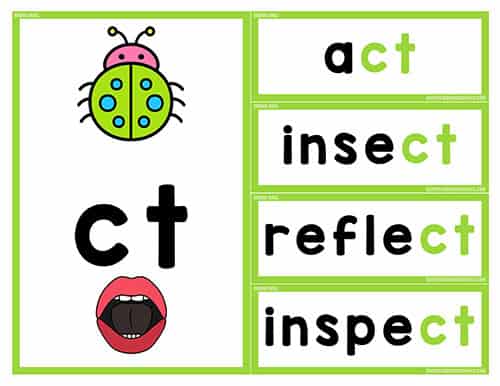
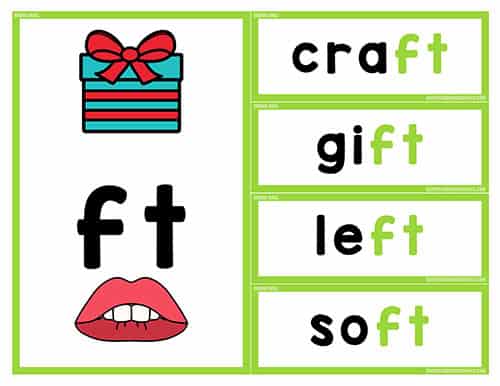
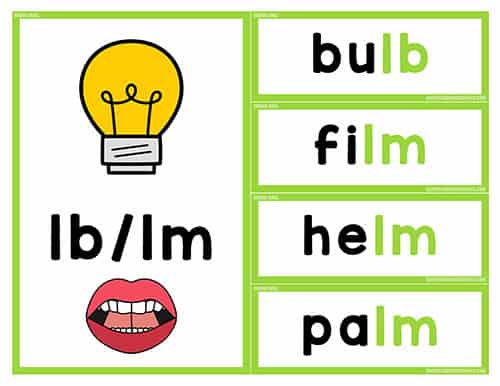
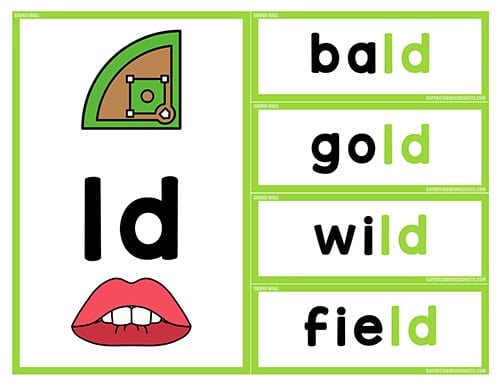
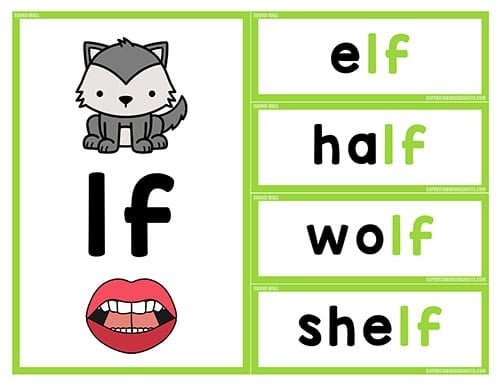
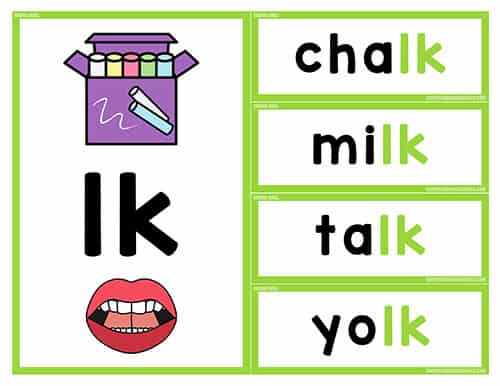
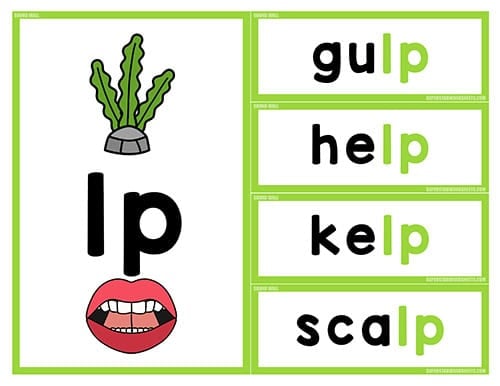
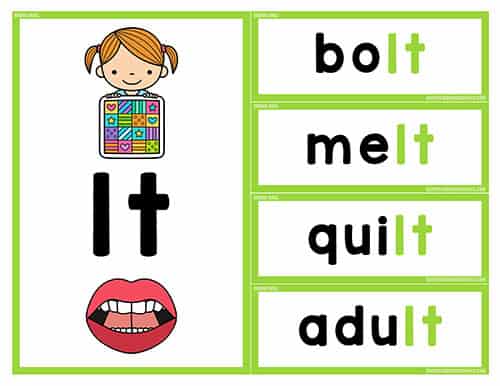
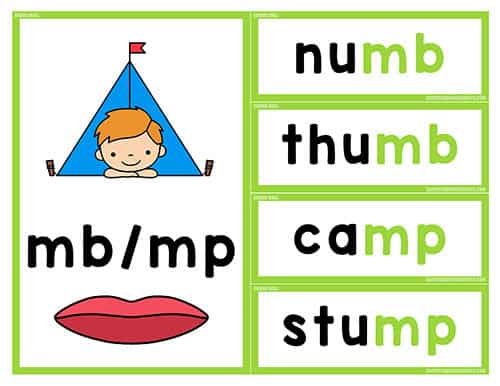
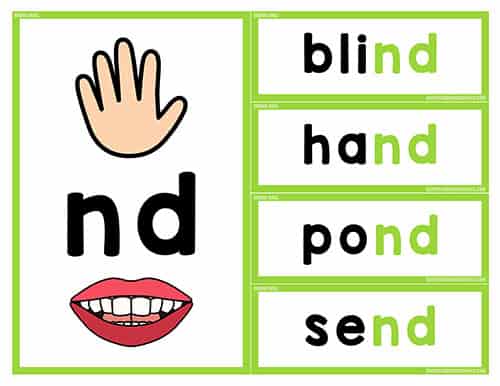
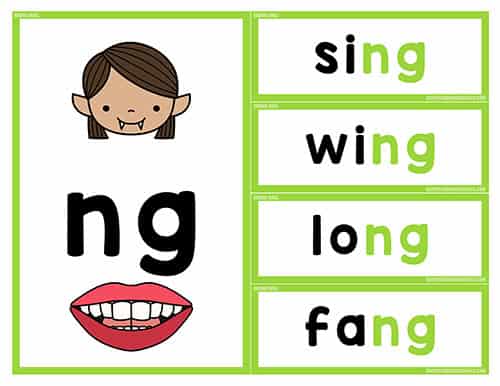
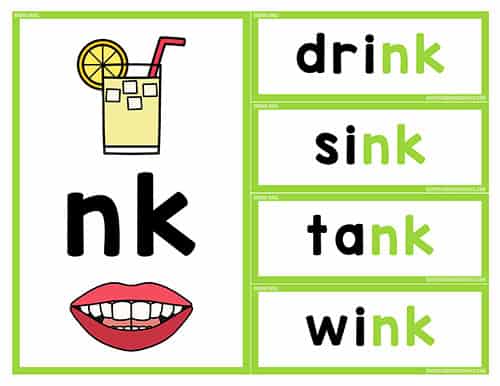
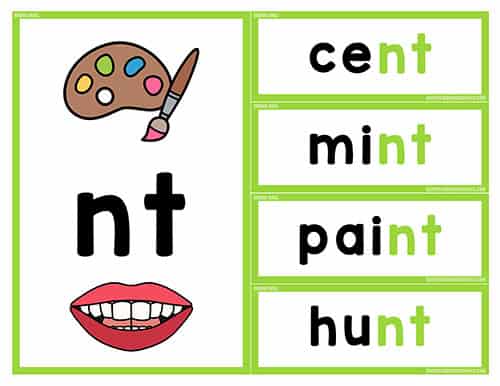
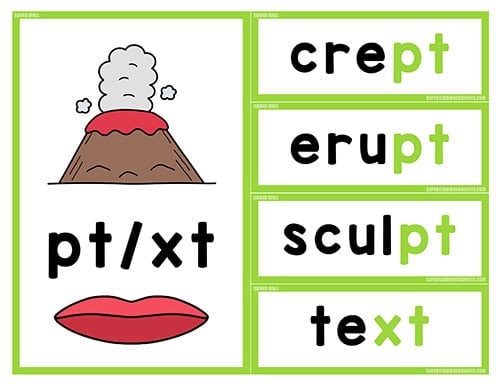
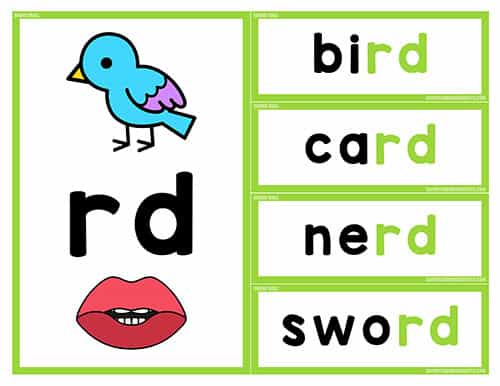
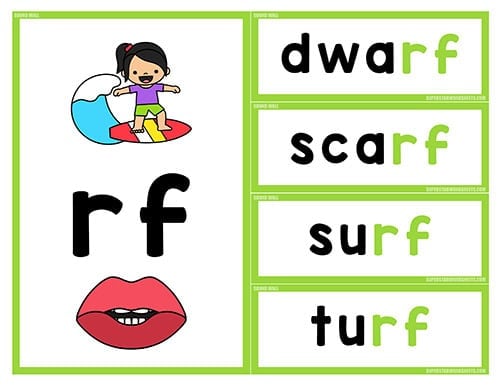
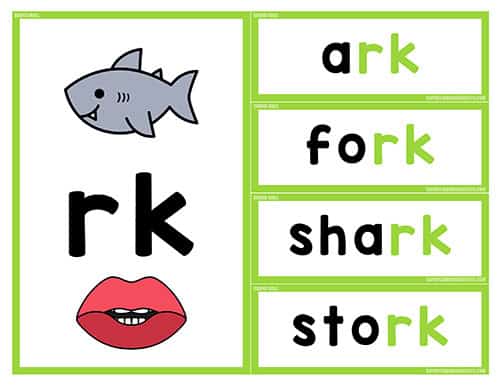
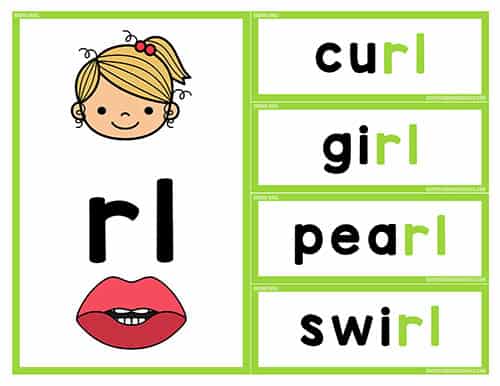
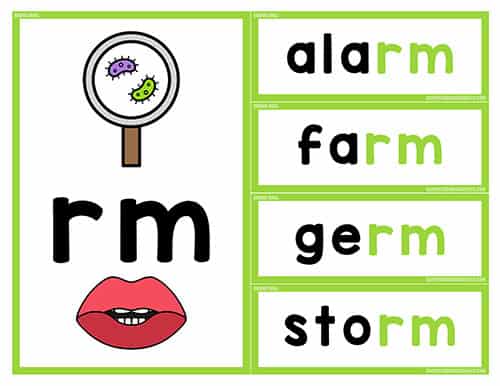
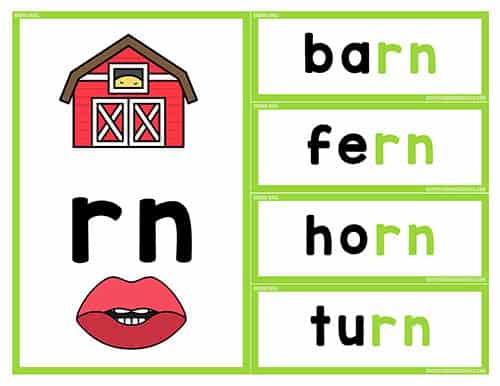
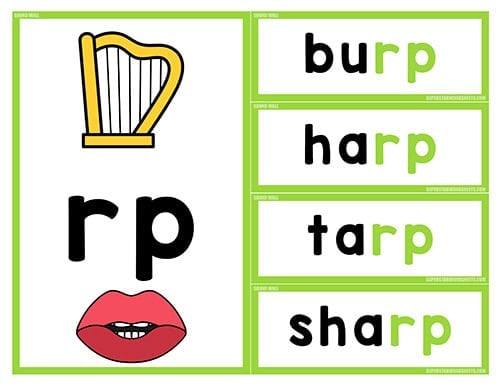
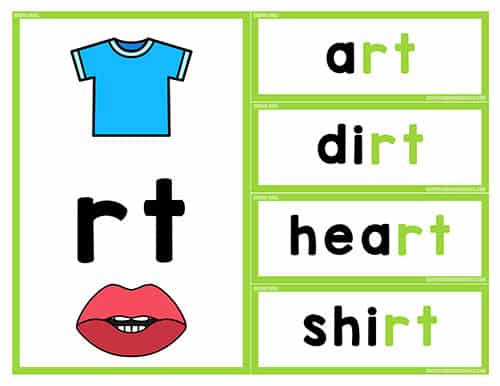
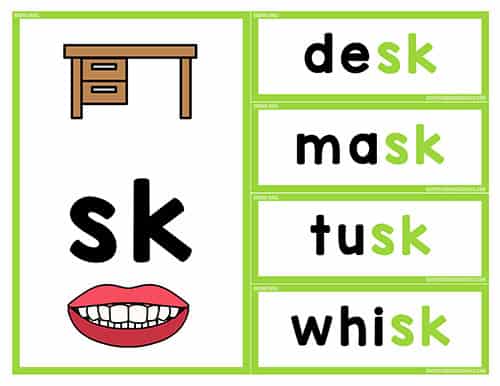
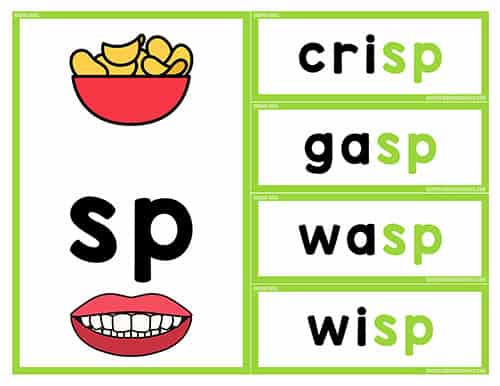
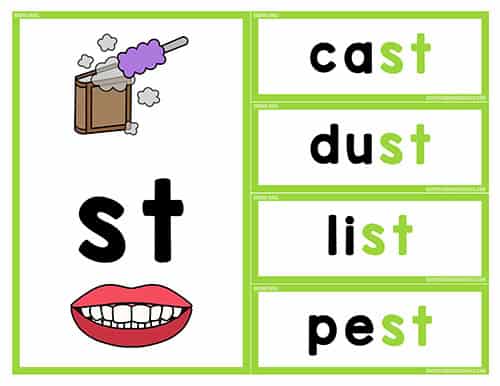
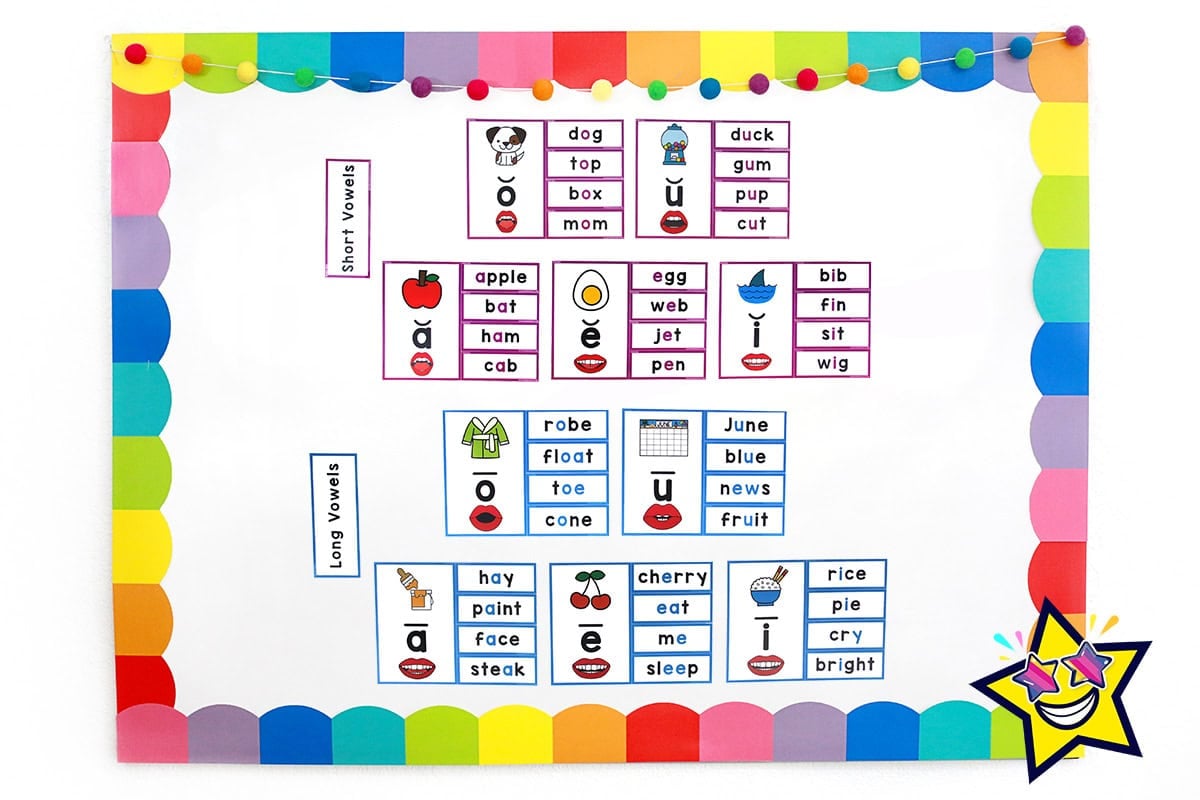
What is a Sound Wall Science of Reading
A Sound Wall, in the Science of Reading, is an innovative instructional tool that organizes phonemes (speech sounds) based on how they are produced in the mouth, rather than using the alphabet letters like traditional word walls. This research-aligned approach typically includes visual representations of mouth positions for each sound, along with common spellings organized by manner and place of articulation.
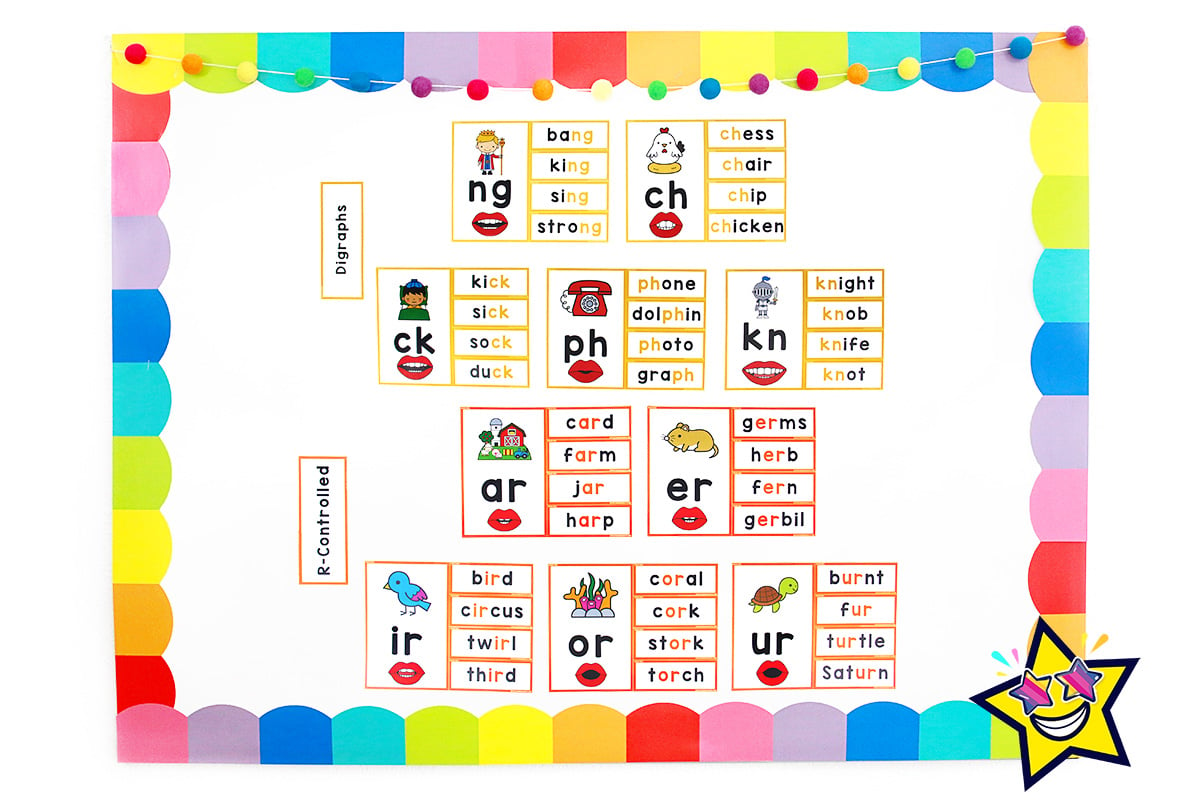
Why Sound Walls Work
Sound Walls help students understand the relationship between spoken sounds and written letters, supporting phonemic awareness and phonics instruction. They serve as a valuable reference during reading and spelling lessons, aiding students in making connections between sounds and letters. This method is particularly beneficial for struggling readers, English language learners, and young children beginning to grasp the complexities of English sound-symbol relationships.
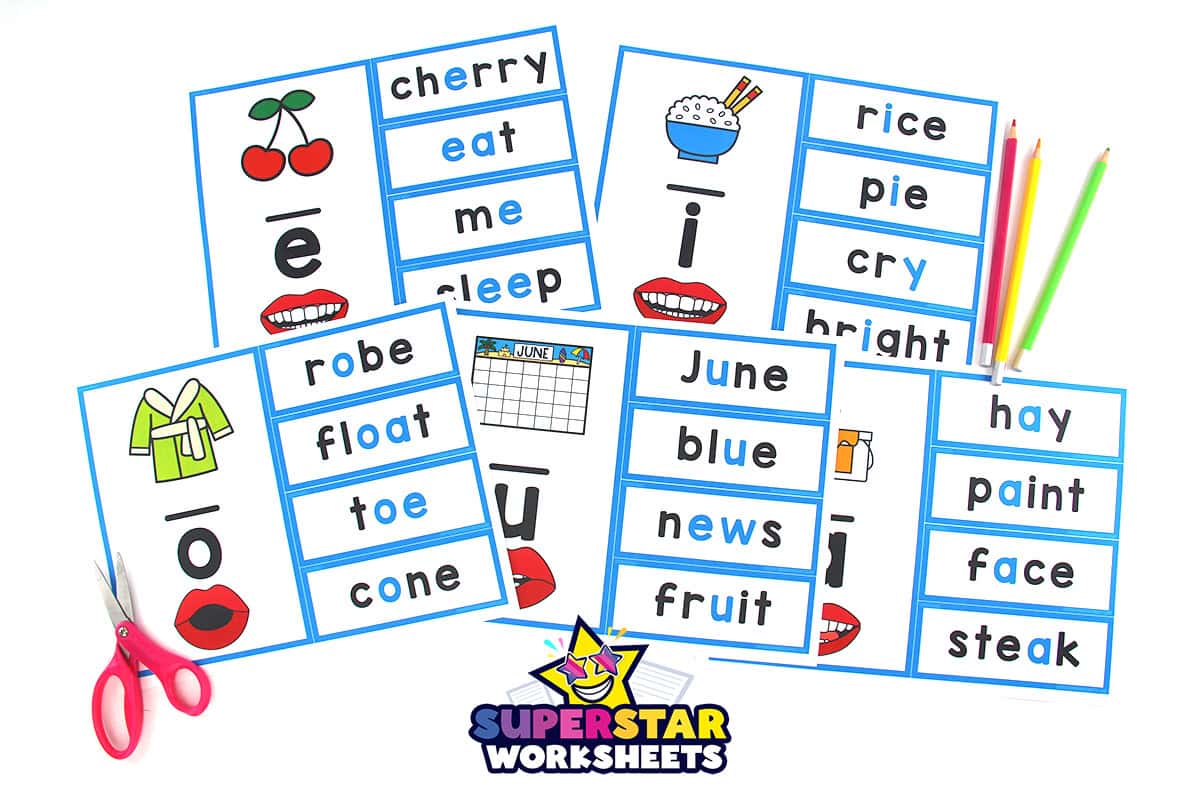
How to Use a Sound Wall
In a classroom or homeschool setting, a Sound Wall can be implemented as a central, interactive learning tool. Start by introducing one sound at a time, demonstrating the mouth position, and associating it with its various spellings. Encourage students to practice making the sound and identifying words that contain it.
Each time you teach a new blend, digraph, or vowel sound, add that sound to the wall. Use the Sound Wall during phonics lessons, spelling practice, and with reading worksheets, regularly referring to it to reinforce sound-symbol connections. As students progress, involve them in adding new words to the appropriate sections of the Sound Wall, making it a dynamic, growing resource that reflects their expanding phonological awareness and vocabulary.
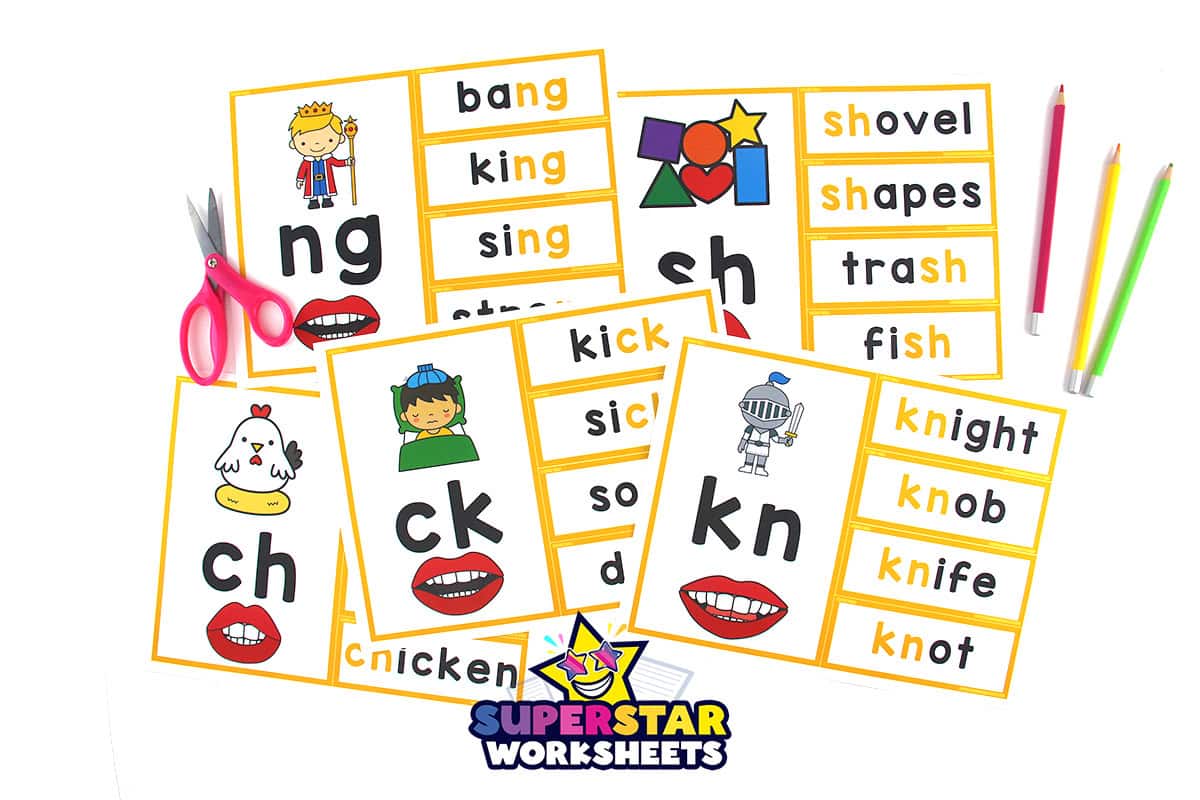
Benefits of a Sound Wall
Implementing a Sound Wall in your learning environment offers numerous benefits that are aligned with the principles of the Science of Reading. This engaging, hands-on tool enhances phonemic awareness and phonics instruction for preschool and elementary students, particularly benefiting K-2 learners.
By organizing phonemes based on manners of articulation, Sound Walls support effective decoding strategies and improve reading pattern recognition, especially in sight words. The visual nature of Sound Walls aids in blending practice and reinforces the connection between spoken sounds and written letters. Sound Walls also serve as an important reference for students during reading and spelling activities, promoting independent learning and boosting students’ confidence in their ability to tackle unfamiliar words.


Tools for Reading Sound Walls
Here are some wonderful tools that can be used in conjunction with our reading Sound Wall:
- Observation checklists – Tools for assessing students’ proficiency in identifying and producing the sounds represented on the Sound Wall. Check out our Kindergarten Assessments, Fry Sight Word Assessments, and Phonics assessments!
- Digital resources – Interactive Sound Wall apps, videos demonstrating mouth shapes, and online games that reinforce phonics skills.
- Anchor charts – Supplemental visual aids that summarize key principles of the Sound Wall and its use in reading/spelling instruction.
- Articulation mirrors – Handheld mirrors allow students to observe the positioning of their mouths and tongues as they practice producing different sounds.
- Mouth diagrams – Visual aids that illustrate the placement of the lips, teeth, and tongue for each sound can help students understand the mechanics of articulation.
- Letter tiles/magnets – Movable letters that can be arranged on the Sound Wall to build words and practice sound-spelling connections.
- Pocket charts – Versatile organizers that allow students to sort, match, and manipulate letters and sounds on the Sound Wall.
- Highlighting tape/markers – Used to visually distinguish different sections of the Sound Wall, like vowels vs. consonants or place/manner of articulation.
- Dry-erase boards – Enable students to practice writing the letters and words associated with each sound on the Sound Wall.

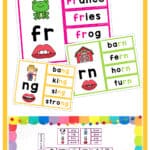
Comments (6)
This is what I was looking for
Same here!
Thanks so much for the wonderful sound wall posters. I have stressed the importance of it so much to other educators and parents. I ❤️ your work.
Perfect resource for the implementation of Better Start Literacy
Do you have locks for these to cover them up when not taught?
Thankyou very much